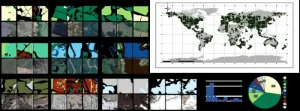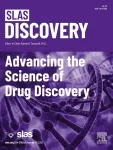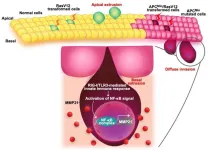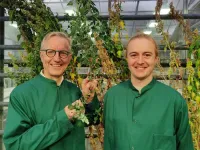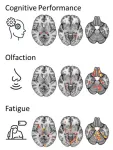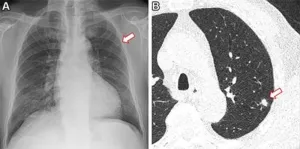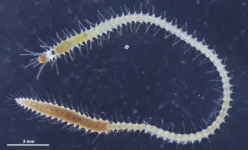(Press-News.org) As the planet gets hotter, animal and plant species around the world will be faced with new, potentially unpredictable living conditions, which could alter ecosystems in unprecedented ways. A new study from McGill University researchers, in collaboration with researchers in Spain, Mexico, Portugal, Denmark, Australia, South Africa and other universities in Canada, investigates the importance of temperature in determining where animal species are currently found to better understand how a warming climate might impact where they might live in the future.
To find out, the researchers tested the role of temperature as a factor that could limit a species’ potential habitat range. They compared the temperatures and areas where 460 cold-blooded animal species currently live to the temperatures and areas where they could live based on their tolerance to temperatures.
They found that, unlike species living in the ocean, land animals such as reptiles, amphibians and insects have habitat ranges that are less directly impacted by temperature. The higher a species is in latitude, the lower its tendency to live in areas near the equator with temperatures they could tolerate, the researchers say. This means that, instead of tolerance to temperature, negative interactions with other species – like with competitors or parasites – could be what keep these species away from this potential habitat.
“It was not surprising to find that temperature doesn’t always limit species ranges, but what was surprising was that, despite the complexity, we found general patterns in the role that temperature plays across species,” said lead author of the study published in Nature Ecology & Evolution and PhD student in the Department of Biology, Nikki A. Moore.
“This research helps us to understand general patterns in how sensitive the distributions of different cold-blooded animal species might be to changes in temperature, which will help us to predict how the global distribution of species will change because of climate change.”
A pattern that predicts species distribution
The pattern that Moore and colleagues found helps resolve two conflicting hypotheses about the distribution of life on earth.
“While it had long been thought that species ranges are less limited by temperature and more limited by species interactions in the tropics, the new work shows that higher-latitude species are increasingly excluded from their potential ranges in the tropics, supporting the idea of a trade-off between broad thermal tolerances and performance in the tropics,” said Moore.
While these results provide insights into the sensitivities of species in different realms and across latitudes to climate change, the next step for this research is to test these predictions using actual observations of species range shifts, the researchers say.
The researchers say predicting and testing how species distributions respond to temperature requires on good observations of where species live. Anyone can get involved in contributing to our knowledge of species distributions through citizen science, using applications such as iNaturalist.
About the study
Temperate species underfill their tropical thermal potentials on land by Nikki A. Moore et al., was published in Nature Ecology and Evolution.
END
How do temperature extremes influence the distribution of species?
McGill biology researchers found that there are patterns regarding the importance of temperature in determining where species live, shedding light on their sensitivity to climate change
2023-11-22
ELSE PRESS RELEASES FROM THIS DATE:
New remote sensing dataset improves global land change tracking
2023-11-22
Tracking unprecedented changes in land use over the past century, global land cover maps provide key insights into the impact of human settlement on the environment. Researchers from Sun Yat-sen University created a large-scale remote sensing annotation dataset to support Earth observation research and provide new insight into the dynamic monitoring of global land cover.
In their study, published Oct 16 in the Journal of Remote Sensing, the team examined how global land use/landcover (LULC) has undergone dramatic changes with the advancement of industrialization and urbanization, including deforestation and flooding.
“We ...
A Special Collection collaboration between SLAS and SBI2
2023-11-22
Oak Brook, IL – The latest issue of SLAS Discovery is a joint Special Collection between SLAS and the Society of Biomolecular Imaging and Informatics (SBI2) to celebrate the 10th Annual SBI2 High-Content Imaging and Informatics meeting. This collaboration features a curated special collection of articles that highlight the significant impact of high-content imaging in basic and translational research. Volume 28, Issue 7 features one perspective, four original research articles and one short communication.
Perspective
Evolution and Impact of High Content Imaging
This ...
A new diagnostic tool to identify and treat pathological social withdrawal, Hikikomori
2023-11-22
Fukuoka, Japan—Researchers at Kyushu University have developed a new tool to help clinicians and researchers assess individuals for pathological social withdrawal, known as Hikikomori. The tool, called Hikikomori Diagnostic Evaluation, or HiDE, can be a practical guide on collecting information on this globally growing pathology.
Hikikomori is a condition characterized by sustained physical isolation or social withdrawal for a period exceeding six months. It was first defined in Japan in 1998, ...
Survival of the fittest? New study shows how cancer cells use cell competition to evade the body’s defenses
2023-11-22
Living cells compete with each other and try to adapt to the local environment. Cells that are unable to do so are eliminated eventually. This cellular competition is crucial as the surrounding normal epithelial cells use it to identify and eliminate mutant cancer cells. Studies have reported that when activating mutants of “Ras” proteins are expressed in mammalian epithelial cells, they are pushed toward the lumen, excreted along with other bodily waste, and eliminated by competition. Epithelial cells containing Ras mutants have been reported to be removed in this manner in several organs, including the small intestine, stomach, pancreas, and lungs. ...
Danish researchers puncture 100-year-old theory of odd little 'water balloons'
2023-11-22
Quinoa and many other extremely resilient plants are covered with strange balloon-like 'bladders' that for 127 years were believed to be responsible for protecting them from drought and salt. Research results from the University of Copenhagen reveal this not to be the case. These so-called bladder cells serve a completely different though important function. The finding makes it likely that even more resilient quinoa plants will now be able to be bred, which could lead to the much wider cultivation of this sustainable ...
Novel MRI reveals brain changes in long-COVID patients
2023-11-22
CHICAGO – People with long COVID exhibit patterns of changes in the brain that are different from fully recovered COVID-19 patients, according to research being presented next week at the annual meeting of the Radiological Society of North America (RSNA).
“To the best of our knowledge, this is the first study comparing patients with long COVID to both a group without history of COVID-19 and a group that went through a COVID-19 infection but is subjectively unimpaired,” said one of the study’s lead authors, Alexander Rau, M.D., resident in the Departments of Neuroradiology and Diagnostic and ...
AI identifies non-smokers at high risk for lung cancer
2023-11-22
CHICAGO – Using a routine chest X-ray image, an artificial intelligence (AI) tool can identify non-smokers who are at high risk for lung cancer, according to a study being presented next week at the annual meeting of the Radiological Society of North America (RSNA).
Lung cancer is the most common cause of cancer death. The American Cancer Society estimates about 238,340 new cases of lung cancer in the United States this year and 127,070 lung cancer deaths. Approximately 10-20% of lung cancers occur in “never-smokers” – people who have never smoked cigarettes ...
This sea worm’s butt swims away, and now scientists know how
2023-11-22
A research team, led by Professor Toru Miura from the University of Tokyo, shows how the expression of developmental genes in the Japanese green syllid worms, Megasyllis nipponica, helps form their swimming reproductive unit called stolon.
Life always finds ways to surprise us. The presence of a unique reproductive mechanism of some annelid worms or segmented worms is one such surprise. In a process called stolonization, the posterior body part with gonads of the syllid worm detaches from its original body. The detached part is called the stolon, and it is full of gametes (eggs or sperms). The stolon swims around by itself and spawns when it ...
New study on experience of adopted people as they become parents
2023-11-22
Becoming a parent is a key turning point for adopted people
Parenting is always challenging, but for adopted people becoming a mum or dad can be extra demanding, as well as extra special – according to research from the University of East Anglia.
A new study is the first in to investigate the lived experiences of adopted people in the UK as they become parents.
It finds that they are affected by issues that link back to their adoption and to difficult experiences in their past – related to loss, rejection, abuse and neglect.
Because of these ...
Anti-rheumatic drugs could prevent thyroid disease
2023-11-22
Anti-rheumatic drugs used for rheumatoid arthritis might prevent the development of autoimmune thyroid disease, according to a new observational study by researchers from Karolinska Institutet published in the Journal of Internal Medicine.
It is well known that patients with rheumatoid arthritis are at increased risk of autoimmune thyroid diseases such as Hashimoto's disease and Graves' disease. While patients with RA are usually treated with immunomodulatory drugs that affect the immune system, such drugs are rarely used in autoimmune thyroid diseases. Instead, such patients are treated with thyroid hormone to compensate for the changes in normal ...
LAST 30 PRESS RELEASES:
Exploring how the visual system recovers following injury
Support for parents with infants at pediatric check-ups leads to better reading and math skills in elementary school
Kids’ behavioral health is a growing share of family health costs
Day & night: Cancer disrupts the brain’s natural rhythm
COVID-19 vaccination significantly reduces risk to pregnant women and baby
The role of vaccination in maternal and perinatal outcomes associated with COVID-19 in pregnancy
Mayo Clinic smartwatch system helps parents shorten and defuse children's severe tantrums early
Behavioral health spending spikes to 40% of all children’s health expenditures, nearly doubling in a decade
Digital cognitive behavioral treatment for generalized anxiety disorder
Expenditures for pediatric behavioral health care over time and estimated family financial burden
Air conditioning in nursing homes and mortality during extreme heat
The Alps to lose a record number of glaciers in the next decade
What makes a good proton conductor?
New science reporting guide published for journalists in Bulgaria
New international study reveals major survival gaps among children with cancer
New science reporting guide published for journalists in Turkey
Scientists develop a smarter mRNA therapy that knows which cells to target
Neuroanatomy-informed brain–machine hybrid intelligence for robust acoustic target detection
Eight SwRI hydrogen projects funded by ENERGYWERX
The Lundquist Institute and its start-up company Vitalex Biosciences Announces Strategic Advancement of Second-Generation fungal Vaccine VXV-01 through Phase 1 Trials under $40 Million Competitive Con
Fine particles in pollution are associated with early signs of autoimmune disease
Review article | Towards a Global Ground-Based Earth Observatory (GGBEO): Leveraging existing systems and networks
Penn and UMich create world’s smallest programmable, autonomous robots
Cleveland researchers launch first major study to address ‘hidden performance killer’ in athletes
To connect across politics, try saying what you oppose
Modulating key interaction prevents virus from entering cells
Project explores barriers to NHS career progression facing international medical graduates
Jeonbuk National University researchers explore the impact of different seasonings on the flavor perception of Doenjang soup
Two Keck Medicine of USC Hospitals named Leapfrog Top Teaching Hospitals
World-first discovery uncovers how glioblastoma tumours dodge chemotherapy, potentially opening the door to new treatments
[Press-News.org] How do temperature extremes influence the distribution of species?McGill biology researchers found that there are patterns regarding the importance of temperature in determining where species live, shedding light on their sensitivity to climate change
